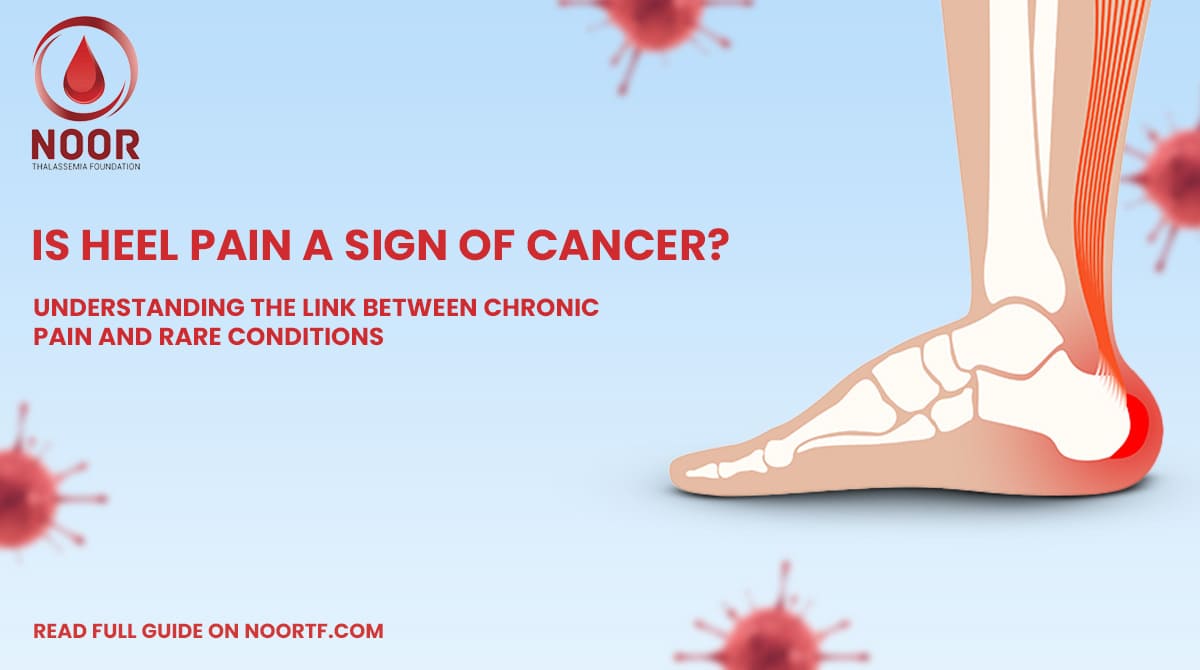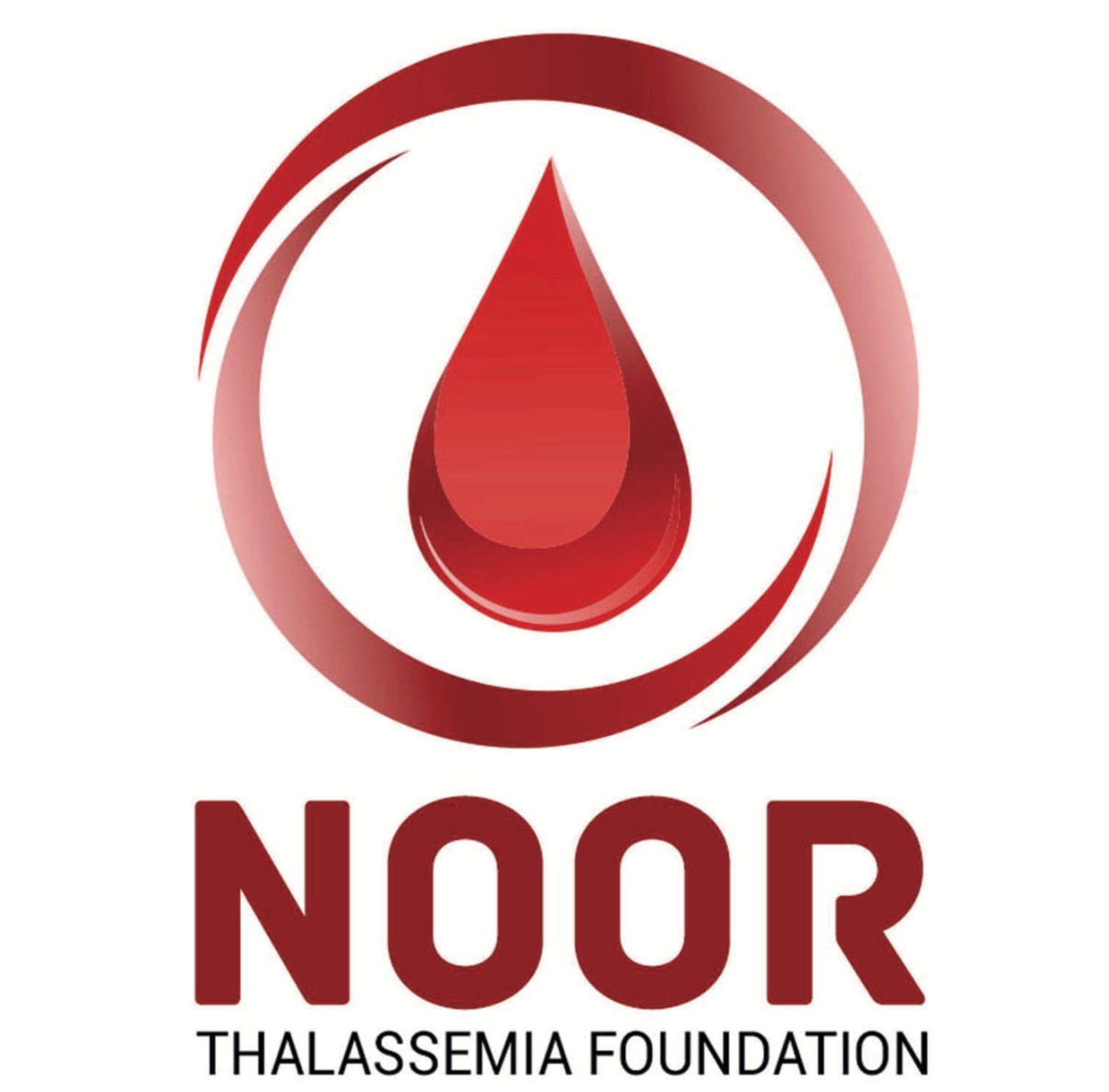Is Heel Pain: A Sign of Cancer?
22-Jul-2025

Experiencing heel pain? Discover the causes, symptoms, treatments, and whether heel pain could be a sign of cancer. Learn exercises, support tips, and when to seek help.
Heel pain is a common complaint among thousands of people, as it affects individuals of all ages. Many things can cause it, from small injuries to serious medical problems. Many people feel that heel pain could be a sign of cancer. While it is rare for heel pain to be directly linked to cancer, it is crucial to understand the various potential causes of heel pain and when to seek medical attention. This article discusses the most common causes of heel pain, the signs to watch for, and various treatment options. It will also address some common questions about heel pain, helping you learn more about it.
Heel Pain Causes
There are many causes of heel pain, ranging from mechanical issues to inflammatory conditions. The most common reasons for heel pain include:
1. Plantar Fasciitis
Plantar fasciitis is the most common cause of heel pain, particularly in adults. The plantar fascia is a band of tissue that goes from your heel to your toes along the bottom of your foot. Excessive use of this tissue puts too much pressure on it, and as a result, its inflammation causes pain in your heel.
2. Heel Spurs
A heel spur is a bony growth that forms on the underside of the heel bone. It often occurs in conjunction with plantar fasciitis, and while it may not cause pain on its own, it can lead to discomfort when pressure is applied to the heel.
3. Achilles Tendinitis
Achilles tendinitis occurs due to the inflammation of the tendon that connects the calf muscle to the heel. This inflamed tendon can cause pain in the back of the heel, particularly during activities such as running or jumping.
4. Bursitis
Inflammation of a bursa, a tiny sac filled with fluid that cushions soft tissues from hard bones, is called bursitis. In the case of heel pain, bursitis typically affects the bursa located at the back of the heel, causing swelling and tenderness.
5. Stress Fractures
Overuse or repeated stress can cause a stress fracture in the heel bone. Although these tiny cracks may not be immediately apparent, they can cause considerable discomfort over time.
Although these are the most common causes of heel pain, serious illnesses like cancer can occasionally manifest as this symptom. Other symptoms, such as swelling, unexplained weight loss, or persistent fever, would likely accompany the pain in such a case.
Symptoms of Heel Pain
Heel pain can vary depending on its cause, but some common symptoms include:
Sharp or stabbing pain: When you first stand up in the morning or stand up after sitting for a long time, you may feel a sharp or stabbing pain on the bottom of your heel.
Dull or aching pain: Some people experience persistent heel pain, especially after prolonged periods of standing or walking.
Swelling: Inflammation or bursitis can cause the heel to look swollen.
Pain during activity: Physical activities, such as running or walking, may exacerbate the pain, depending on the underlying cause.
If you notice any of these signs and symptoms, consult a doctor to determine the cause and appropriate treatment.
Sudden Heel Pain Without Injury
Experiencing sudden heel pain without an injury can be alarming, but it is not always a cause for concern. Plantar fasciitis, Achilles tendinitis, and heel spurs are common causes of acute heel pain; these conditions often develop gradually over time and are not always caused by an injury. Various other factors could involve:
Overuse: Foot pain can occur as a result of sudden increases in physical activity, such as running or walking many miles.
Poor footwear: If your shoes don't offer enough arch support or place too much strain on your heel, you could experience heel pain.
Obesity: Being overweight increases the strain on the feet, which can cause acute heel pain.
It is crucial to seek medical attention to rule out serious conditions if any of the following symptoms appear simultaneously with abrupt heel pain, including swelling, bruising, or persistent pain.
Heel Pain Exercises
Heel pain can be significantly alleviated with gentle stretching and strengthening exercises. Regular workouts consist of:
- Calf Stretch: Stand facing a wall and stretch your calves one leg at a time.
- Plantar Fascia Stretch: Pull your toes toward you while seated.
- Rolling Massage: Use a frozen water bottle or massage ball under the heel.
- Towel Scrunches: Use your toes to scrunch a towel, strengthening foot muscles.
Consistency with these exercises can help reduce symptoms and prevent recurrence.
Heel Pain Treatment
The treatment for heel pain largely depends on the underlying cause. Here are some general treatment options:
- Rest: Giving your foot time to heal by avoiding activities that put pressure on the heel is essential.
- Ice: Applying ice to the affected area can help reduce inflammation and numb the pain.
- Over-the-counter pain relievers: Medications like ibuprofen or acetaminophen can help alleviate pain and inflammation.
- Physical therapy: Exercises designed to stretch and strengthen the muscles and tendons in the foot can help improve mobility and reduce pain.
- Corticosteroid injections: In some cases, a doctor may recommend injections to reduce inflammation.
Heel Pain Support Shoes
Wearing proper footwear is essential for managing and preventing heel pain. Support shoes that offer cushioning, arch support, and stability can help alleviate pressure on the heel and prevent further damage. Look for shoes with the following features:
- Adequate arch support: Helps distribute weight evenly and reduces pressure on the heel.
- Cushioning: Soft, cushioned insoles can absorb shock and minimize stress on the heel.
- Stability: Shoes that provide good support around the heel can reduce the risk of exacerbating heel pain.
If you're unsure about which shoes are best for your condition, consult a podiatrist for personalized recommendations.
Inserts for Heel Pain / Insoles for Heel Pain
Inserts or insoles provide extra support and cushioning to individuals suffering from heel pain. By simply placing these inside your shoes, insoles can alleviate pressure on the heel area and relieve stress on it. Custom-made orthotic insoles tend to provide greater benefits; however, over-the-counter options may also work just as effectively. Some benefits associated with insole use:
- Improved arch support: Insoles can offer the extra support needed to reduce stress on the heel.
- Shock absorption: Cushioning can reduce the impact on your heel when walking or running.
- Pain relief: Insoles help distribute pressure more evenly across the foot, providing relief from pain.
KT Tape for Heel Pain
KT tape (kinesiology tape) has become an effective treatment option for various forms of muscular-skeletal discomfort, particularly heel pain. It works by gently lifting the skin to alleviate pressure in affected areas while improving blood flow. It can help:
- Reduce pain: The tape helps alleviate pressure on the inflamed tissues.
- Provide support: KT tape can offer additional support for the affected area during physical activities.
- Promote healing: By improving circulation and reducing swelling, KT tape can aid in the healing process.
How to Walk in Heels Without Pain?
For those who experience heel pain but still wish to wear high heels, there are several strategies to reduce discomfort:
- Choose the right heel height: Opt for heels with a lower height or a thicker base to provide more stability.
- Use gel inserts: Cushioning inserts can help absorb pressure and reduce discomfort.
- Take breaks: If you're wearing heels for an extended period, take breaks to give your feet some rest.
Heel Pain ICD 10
The International Classification of Diseases (ICD) code for heel pain varies based on the specific diagnosis. Common codes related to heel pain include:
- M77.9 – Plantar fasciitis
- M75.1 – Achilles tendinitis
- M71.2 – Bursitis of the heel
Healthcare professionals use these codes for billing and diagnostic purposes.
FAQs
How to Cure Heel Pain Fast?
Rest, ice application, and over-the-counter pain relievers are the fastest ways to alleviate heel pain. You can also get instant relief by using supportive shoes or insoles. Consulting a doctor for a more personalized treatment is recommended, as the quickest cure is contingent upon determining the root cause.
How Do I Get Rid of the Pain in My Heel?
The first step in relieving heel pain is figuring out the root cause. Symptoms of heel spurs, plantar fasciitis, or Achilles tendinitis can be alleviated with a combination of rest, stretching, pain medication, and orthotic support. For more serious instances, medical assistance may be required.
Bottom of Heel Pain
Many people experience pain at the base of their heel due to plantar fasciitis. In most cases, the pain is severe and becomes worse upon rising and walking. To alleviate this pain, try incorporating stretching exercises and wearing supportive shoes.
Pain in the Heel of the Foot When Walking
Plantar fasciitis, heel spurs, and Achilles tendinitis are common causes of walking-related heel pain. Physical therapy, wearing supportive shoes, and limiting physical activity can all help with pain management in these cases.
Sudden Heel Pain Without Injury
Improper footwear, weight gain, or excessive use can cause abrupt heel pain that is not caused by an injury. Inflammations like bursitis or plantar fasciitis may also play a role.
Sharp Pain in the Back of the Heel
Sharp pain in the back of the heel is commonly caused by Achilles tendinitis. Stretching the calf muscles and wearing heel lifts or orthotics can help reduce this pain.
 +042 111 666 783
+042 111 666 783